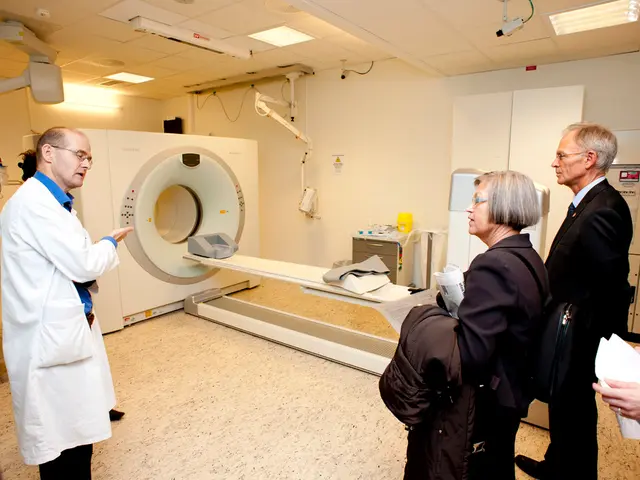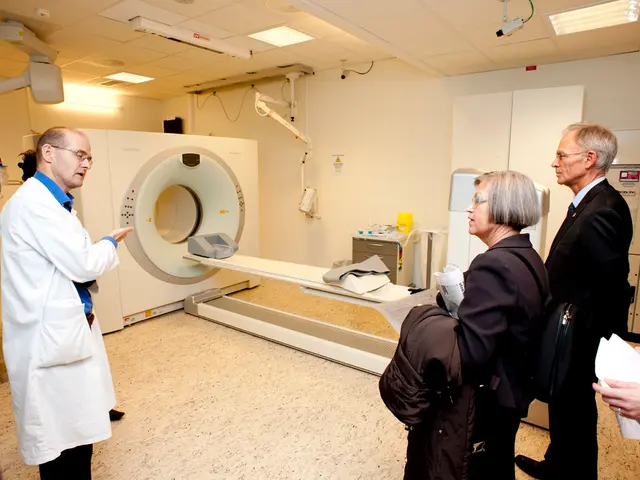DIY Evaluation: Is it Possible to Identify Erectile Dysfunction at Home?
Erectile dysfunction (ED) is a common concern for many men, and it's essential to approach its diagnosis with accuracy and care. This article outlines the recommended methods for diagnosing ED and explains why self-tests for ED are often inaccurate.
A doctor's assessment involves a detailed medical and sexual history, a thorough physical examination, and various diagnostic tests to identify the root cause of ED.
1. **Medical and Sexual History**: Doctors delve into your sexual history, the frequency of ED episodes, and their severity. They also enquire about any medical conditions and lifestyle habits that might be contributing to ED[1][4].
2. **Physical Examination**: A comprehensive examination of the genitals is conducted to check for anatomical issues. Additionally, signs of hormonal imbalances, such as breast enlargement or reduced hair growth, are evaluated[1][4].
3. **Diagnostic Tests**: - **Blood Tests**: These are used to check for diabetes, low testosterone levels, high cholesterol, or other underlying conditions that might be causing ED[1]. - **Urine Tests**: Conducted to detect diabetes or other metabolic conditions[1]. - **Ultrasound (Doppler Ultrasound)**: Used to assess blood flow to the penis[1]. - **Nocturnal Penile Tumescence (NPT) Test**: While this test was previously used for checking signs of ED at home, it has been discounted by medical professionals due to its inaccuracy[1]. - **Psychological Assessment**: This helps identify any emotional or mental health issues contributing to ED[1].
Self-tests for ED are generally inaccurate due to their inability to conduct comprehensive evaluations, misinterpret symptoms, overlook important diagnostic factors, and distinguish between physical and psychological causes of ED[1][4]. As a result, self-tests might lead to misdiagnosis, resulting in inappropriate treatment that could worsen the condition.
In conclusion, while self-tests might provide some initial insights, they are not reliable for diagnosing ED. Healthcare professionals are essential for accurate diagnosis and treatment planning. Recognizing the signs of ED, such as inability to get or maintain an erection, low self-esteem, depression or anxiety, stress, relationship difficulties, high blood pressure, diabetes, heart disease, high cholesterol, obesity, physical inactivity, and smoking, can be a useful first step for those who think they may have ED. If you are concerned about ED, it's important to speak with a doctor or healthcare provider for a proper diagnosis and treatment plan.
[1] Mayo Clinic. (2021). Erectile dysfunction. Retrieved from https://www.mayoclinic.org/diseases-conditions/erectile-dysfunction/diagnosis-treatment/drc-20369763
[4] NHS. (2021). Erectile dysfunction. Retrieved from https://www.nhs.uk/conditions/erectile-dysfunction/
- The medical and sexual history investigation by doctors includes queries about the frequency and severity of ED episodes, along with enquiries into potential medical conditions and lifestyle factors contributing to ED[1][4].
- A comprehensive physical examination is part of the ED diagnosis process, involving a checking of the genitals for anatomical issues and evaluating signs of hormonal imbalances[1][4].
- Various diagnostic tests such as blood tests, urine tests, ultrasound (Doppler Ultrasound), Nocturnal Penile Tumescence (NPT) Test, and psychological assessments are essential for identifying the root cause of ED[1].
- Self-tests for ED are often inaccurate due to their limited capability to conduct comprehensive evaluations and the possibility of misinterpreting symptoms, resulting in misdiagnosis and inappropriate treatment, which could potentially worsen the condition[1][4].




